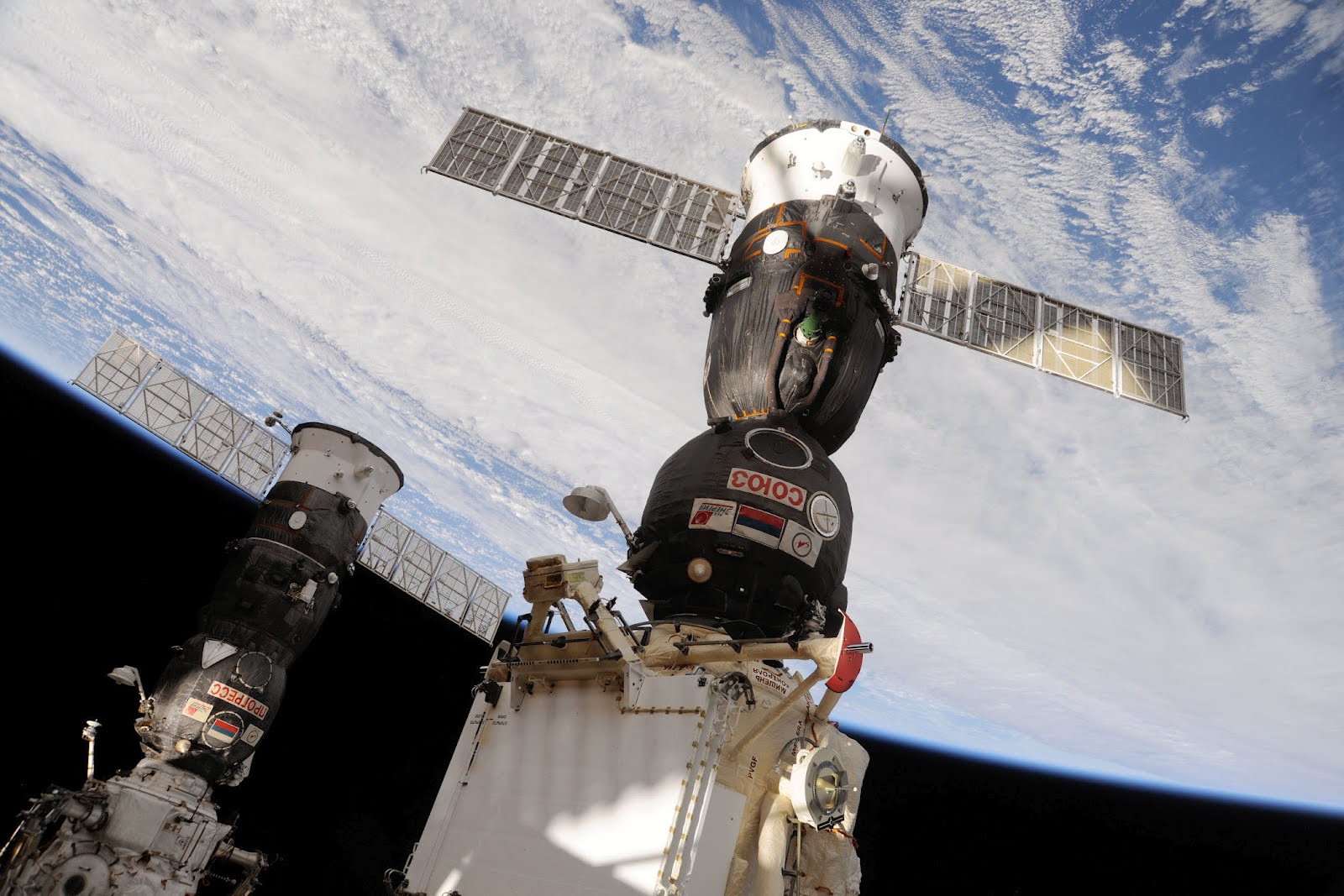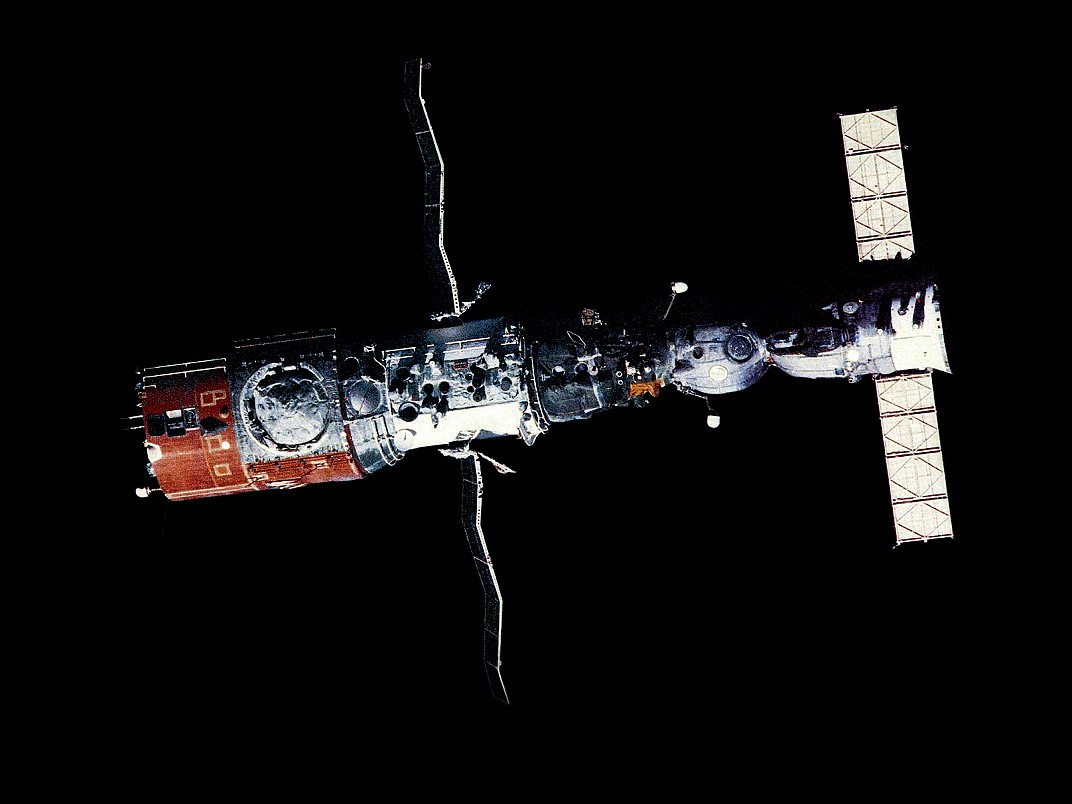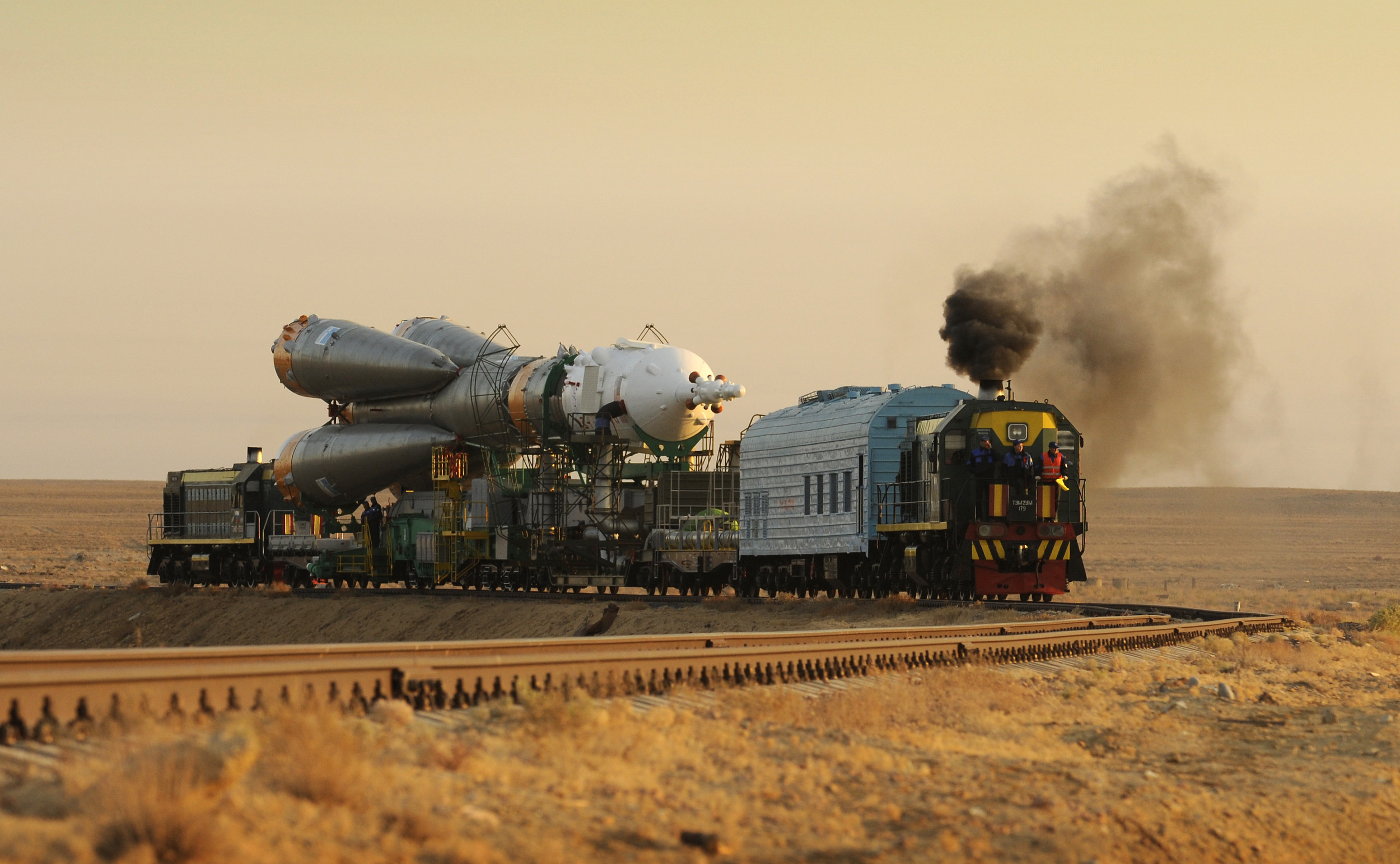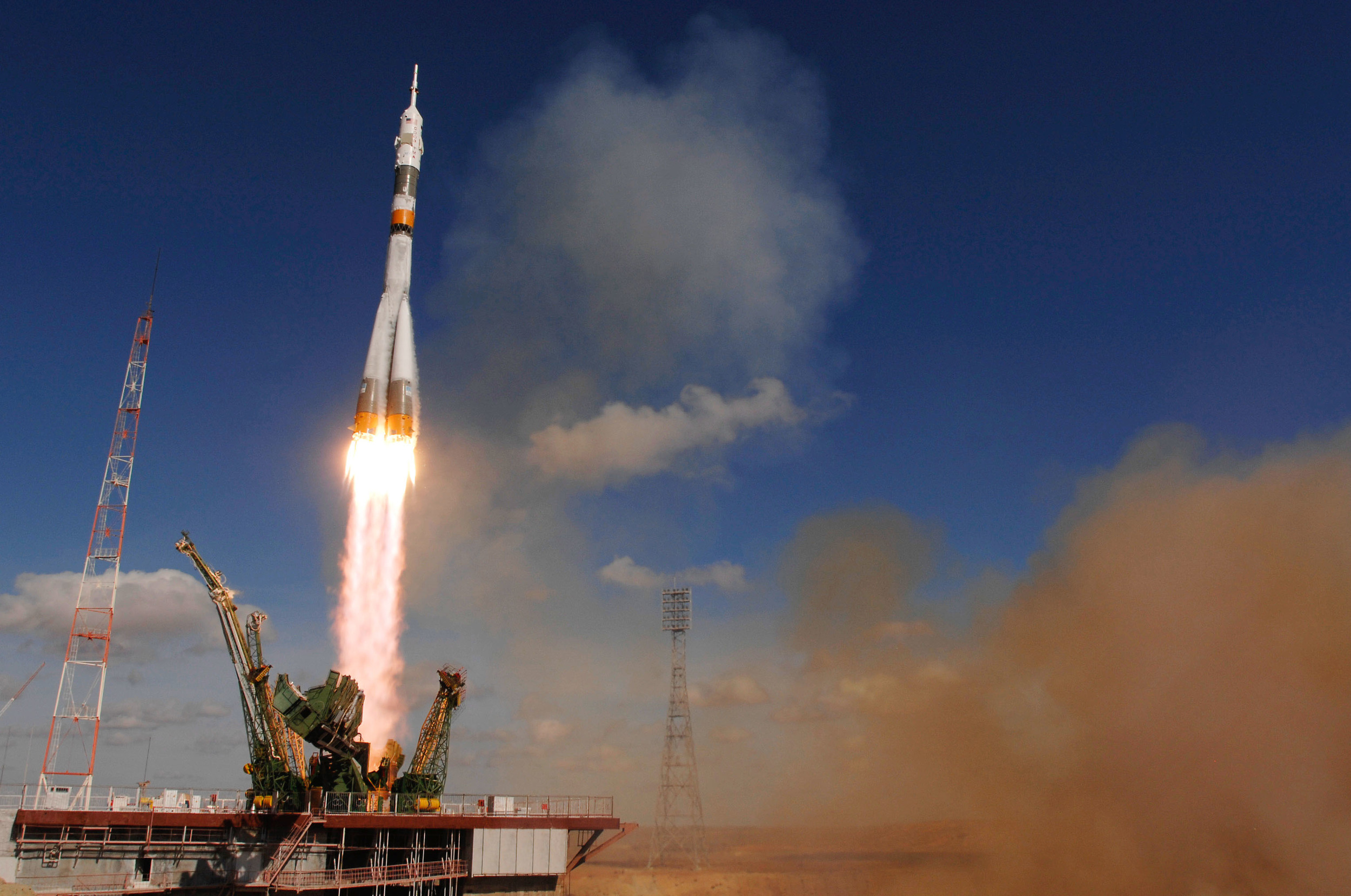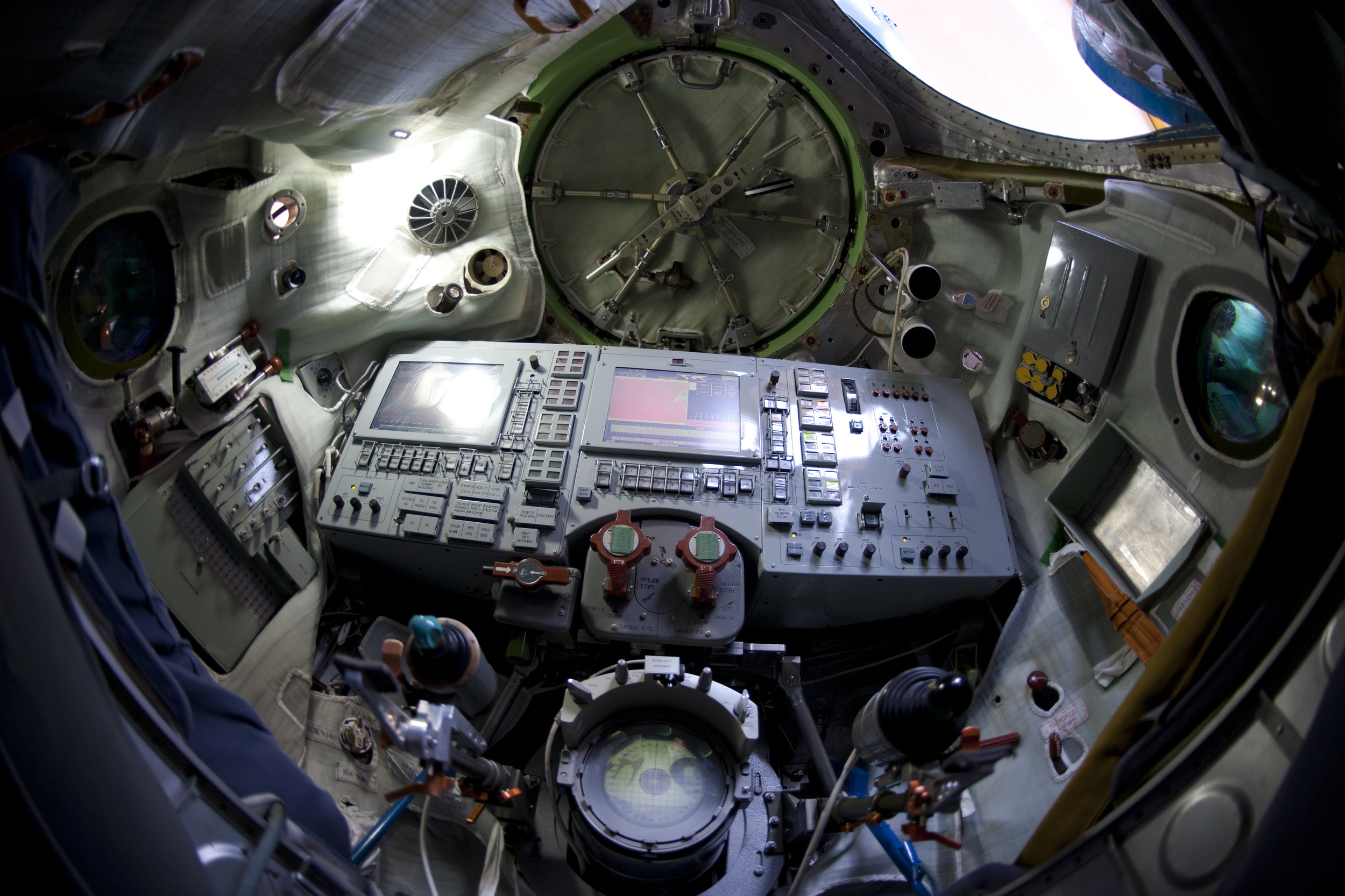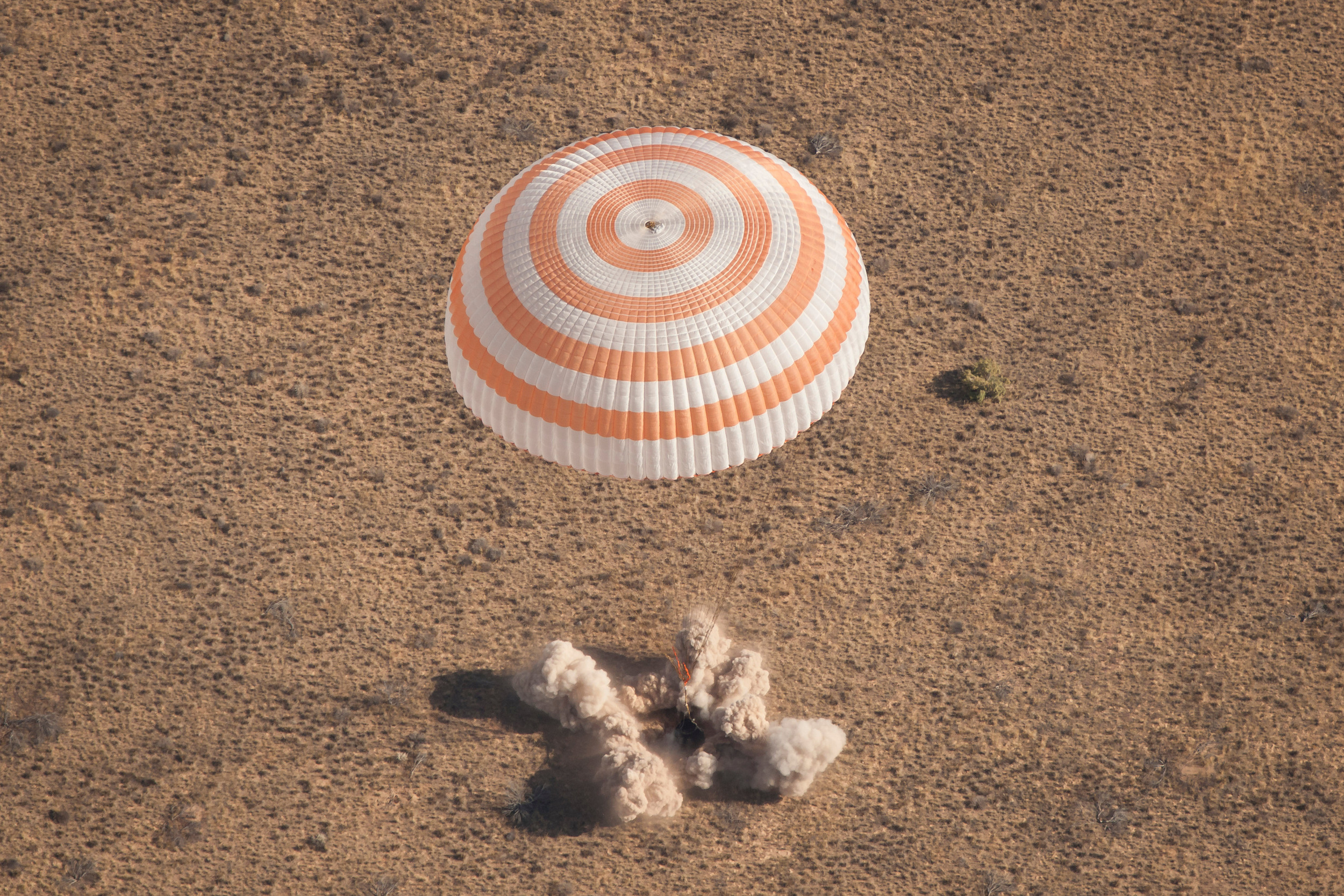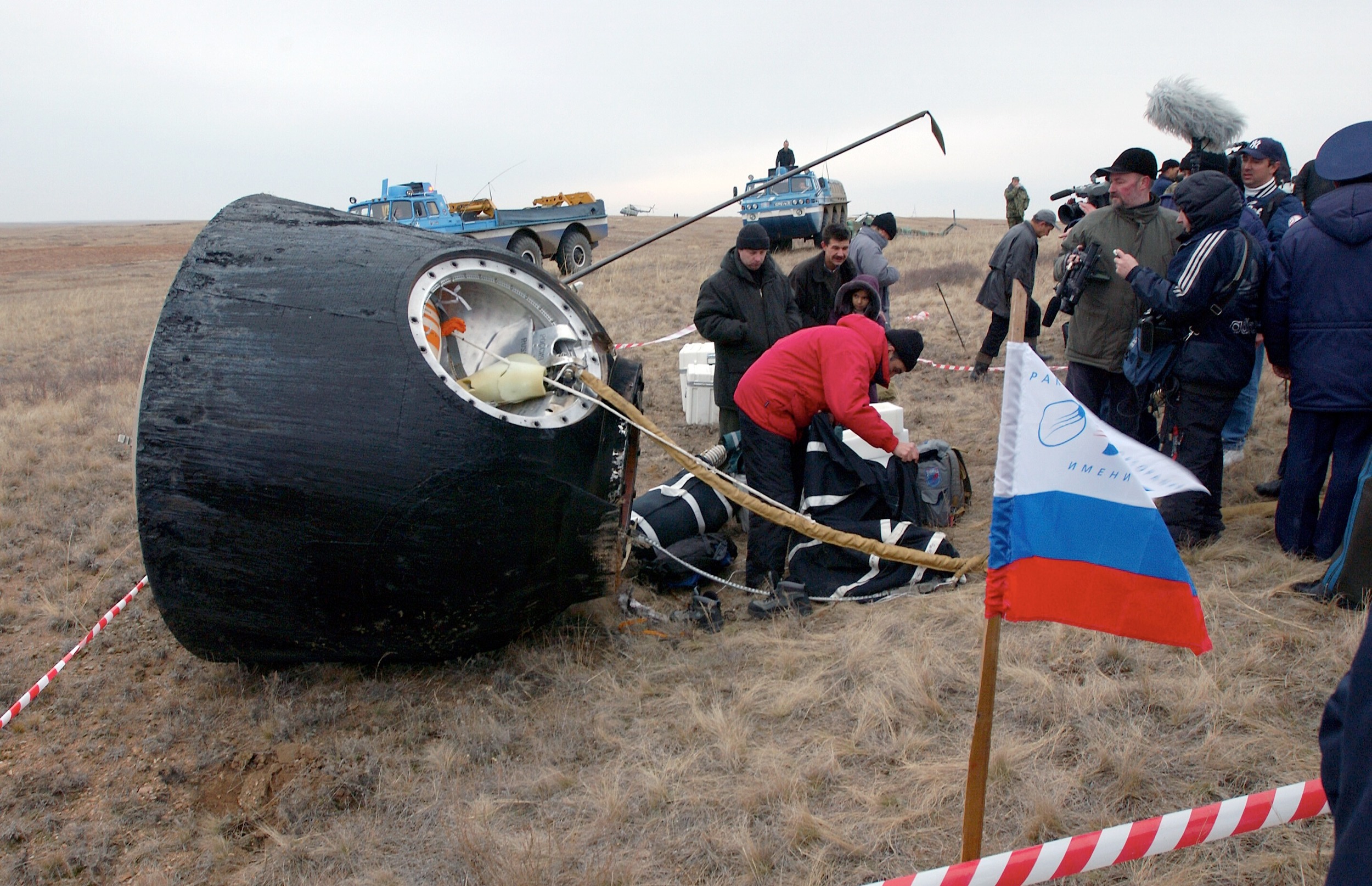What is Soyuz?
The Soyuz, which means "union" in Russian, was originally developed in the late 1960s by the Soviet Union as part of their manned lunar program. By the early 1970s, when Soviet efforts to send a man to the moon failed, attention was then then focused on sending crews to space stations such as Salyut, Mir and the International Space Station.
The Soyuz is not reusable, so a new spacecraft is built for every flight. This allowed for numerous upgrades throughout its nearly 50 years of service.
A Soyuz has been to every crewed space station in history, except Skylab and the recent Tiangong stations, and can remain docked as a lifeboat for about six months before requiring to be returned back to Earth. Each one can support a crew of three astronauts and cosmonauts.
— Quick facts —
Basics
Country: Russia
Operator: Roscosmos
Manufacturer: RSC Energia
Launch site: Baikonur Cosmodrome, Kazakhstan
Launch vehicle: Soyuz-FG
Reusable: No
Name meaning: Union
Status: Active
Specifications
Dry mass: ~7,100 kg
Height: 7.5 m
Width: 2.7 m
Max. crew size: 3
Orbital life: 210 days when docked to station
Flight history
First flight: Soyuz 1, April 23, 1967
Number flown: 130+
Variants: 7K-OK, 7K-T, 7K-TM, T, TM, TMA, TMA-M, MS
Failures: Soyuz 1 in 1967, Soyuz 11 in 1971, Soyuz 18a in 1975, Soyuz T-10a in 1983 and Soyuz MS-10 in 2018
Stations visited: Salyut 1, Salyut 3, Salyut 4, Salyut 5, Salyut 6, Salyut 7, Mir and ISS
— Sections —
Orbital Module
Mass: 1,300 kg
Width: 2.2 m
Height: 2.6 m
Living volume: 5 m³
The Orbital Module, which is a spheroid shape and provides extra room for the crew during their mission, houses all equipment not needed for reentry. This includes experiments, cameras, cargo, a toilet, docking avionics and communications gear.
Since the introduction of the Soyuz TM, a small window provides the crew with a forward looking view. There is also a hatch on the bottom that connects the Orbital Module with the Descent Module.
If needed, the module can act as an airlock by closing the bottom hatch. The compartment would then be depressurized and the crew would exit through a side hatch toward the Descent Module. This same hatch is used on the launch pad for crews to enter the spacecraft.
After the deorbit burn, the module separates from the Descent Module and burns up in the atmosphere.
Descent Module
Mass: 2,900 kg
Width: 2.2 m
Height: 2.1 m
Volume: 2.5 m³
The Descent Module, which the crew sits in for launch and reentry, is the only part that returns to Earth.
This compartment seats a crew of three. They sit in Kazbek seats, which have a seat-liner custom molded to the user.
Included inside is an instrument panel and a window on either side of the cabin. A hatch to the Orbital Module is located at the top. Upon reaching orbit after launch, a periscope is extended to allow the crew to monitor rendezvous and docking phases.
The Descent Module has a heat shield on the bottom and is slowed, initially, by the atmosphere. After going slow enough, a breaking parachute deploys followed by the main parachute. At one meter above the ground, four solid-fuel braking engines, located behind the heat shield, are fired to soften the landing.
Propulsion Module
Mass: 2,600 kg
Width: 2.7 m
Width (w/ solar): 10.6 m
Height: 2.5 m
The Propulsion Module houses the fuel needed for rendezvousing and deorbiting. It also contains instruments for temperature control and equipment for long-range radio communications, power and telemetry.
Connected to the sides of the Propulsion module are two solar panels. They are folded up prior to launch and extended upon reaching orbit. They provide power to the craft for the duration of the flight.
At the bottom of the module is the main engine, called SKD, that is used for maneuvering in orbit and starting the descent back to Earth. There are also a series of low-thrust engines around the perimeter of the module that is used for orienting the Soyuz.
After performing the deorbit burn, both the Propulsion Module and the Orbital Module are detached from the Descent Module and burn up in the atmosphere.
— Launch, Docking and Landing —
Launch
The spacecraft launches from Baikonur Cosmodrome in Kazakhstan via a Soyuz rocket. After assembling the spacecraft and rocket, the process leading up to launch, including loading some 300 tonnes of propellent, takes hours. Once the engines fire and vehicles starts to move, the whole ride to orbit lasts about nine minutes.
Video courtesy of the European Space Agency
Rendezvous and Docking
After launch, the Soyuz goes through a set of procedures to catch up and dock with the International Space Station. There are two options for rendezvous, depending on when the Soyuz rocket launches: a long two-day trip or a short six-hour trip. Both require a complex set of timed maneuvers to get both vehicles in the same place at the same time going about the same speed. Then the spacecraft must slowly move-in and dock with the outpost.
Video courtesy of the European Space Agency
Landing
Landing occurs on the flat steppe of Kazakhstan not far from the space center. The Soyuz lands via a parachute as well as a last minute thrust of "soft landing" engines. Many astronauts have compared landing in a Soyuz to a car crash.
Video courtesy of the European Space Agency
— History —
Soyuz was originally designed for the Soviet Union's ill-fated lunar program. The first uncrewed test flight occurred Nov. 28, 1966. The first flight with a person was on April 23, 1967. It was called Soyuz 1.
The Soyuz 1 flight was plagued with a number of issues and ultimately resulted in the death of its pilot, Vladimir Komarov, due to a parachute failure. Crewed flights would not resume until Soyuz 3 in 1968.
During its early years the Soyuz practiced a number of techniques needed for orbital rendezvous and docking with space stations. The first successful docking with a space station occurred June 7, 1971, during the Soyuz 11 mission, when Georgy Dobrovolsky, Vladislav Volkov and Viktor Patsayev arrived at Salyut 1—the world's first space station.
Disaster struck a few weeks later, however, when the crew was returning to Earth. After the Soyuz completed its deorbit burn and the Orbital and Propulsion modules separated from the Descent Module, a valve between the sections of the spacecraft became stuck in the open position releasing the cabin's atmosphere. As a result, the crew quickly died from asphyxiation. To this day, they are the only humans that have died outside Earth's atmosphere.
About a decade later, the crew of Soyuz 18a (originally just Soyuz 18, but later renamed) became the first, and only, people to experience the activation of a launch escape tower. Because a valve didn't close properly, some of the Soyuz rocket's propellant spilled onto the launch pad, starting a large fire that quickly consumed the booster. For safety, the ground team, kilometers away, activated the escape tower, propelling the crew to safety.
Despite these accidents, Soyuz is considered the safest and most reliable spacecraft in history. Some even argue it is the most cost-effective.
Though its first crewed flight occurred in 1967, the Soyuz has been upgraded a number of times. Additionally, it has flown more than 130 missions since it's debut.
The spacecraft have carried crews to all space stations except for the American Skylab and the recent Chinese Tiangong space stations. Today, at least one Soyuz is docked with the International Space Station at all times to be used as an escape vehicle.
Currently, Roscosmos is in the early stages of designing and testing a replacement for the venerable spacecraft. This new vehicle, called Federatsiya, is expected to fly its first crews no earlier than 2024.




